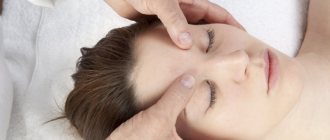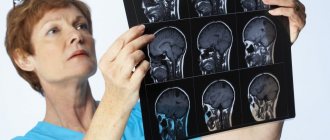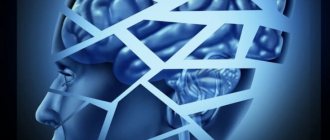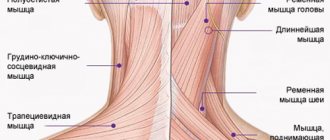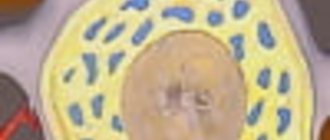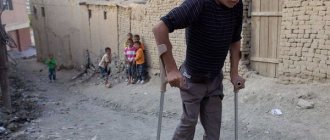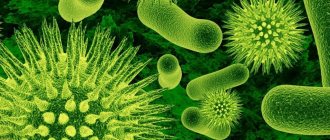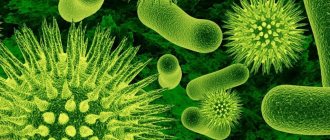ADHD in adults: what it is, symptoms, diagnosis, treatment
By: Administrator |
Tags: Diagnosis of ADHD, Treatment of ADHD, Causes of ADHD, ADHD, Attention Deficit Hyperactivity Disorder | Comments: | July 21, 2021 Attention deficit hyperactivity disorder (ADHD) is a condition that affects concentration, memory, and behavior. It was once thought that children with the condition outgrew the condition, but it is now recognized that many remain affected for life.
According to statistics, this disorder affects approximately one in 20 adults, mostly men. The disease is usually diagnosed in childhood, but some people are undiagnosed. It is much more difficult for able-bodied people to overcome the disorder as it makes managing daily activities more difficult, especially tasks that require organization, planning and focus. Among other things, many begin to drink, smoke and use psychotropic substances.
Features of ADHD in adults
Lack of focus and concentration is a neurological condition. Brain scanning studies show that people with this condition have neural circuits that are slightly different than those of normal people. Physical and chemical differences in the brain affect executive functioning. This means that people with ADHD have a much harder time concentrating and regulating their behavior.
The main features are:
- Difficulty staying interested (for example, at work during conversations or personal relationships);
- hyperactivity (for example, fidgeting or inability to sit still, talk a lot, gesticulate excessively);
- Impulsivity (eg, interrupting conversations, inability to wait in line).
Correction of hyperactivity
It is important for parents to monitor their baby’s development from the first days of life. Especially in the case of the presence of negative factors that accompanied the bearing of a child and its birth.
A careful attitude towards the baby in the family will help eliminate ADHD. The home should have a calm and favorable environment. Parents are not recommended to raise their voice to the child or be overly demanding of him.
It is important to form adequate self-esteem in a child from a very early age, praising small actions successfully performed and calmly paying attention to possible mistakes made. They are inevitable, but you should not put too much emphasis on them, causing the child to feel guilty. The support of elders in all endeavors is important for a child. He should have a calm daily routine with the obligatory presence of daily walks with active games, the formation of habits in the field of proper nutrition helps in controlling hyperactivity.
Such careful attitude is required for any child, but the implementation of such corrective rules is mandatory in families with a hyperactive child. It is important for parents to regularly consult a doctor for behavioral diagnosis. In case of acute conditions, the doctor prescribes a set of corrective medications. Only specialists can prescribe any medications. Independent therapy in choosing a course of treatment is prohibited.
Causes of the disorder
ADHD is not caused by poor parenting, too much sugar, additives, absent fathers, or vaccines. These are all myths. Most often, attention deficit disorder is a genetic disease. The chance that a child will inherit the disease from one parent who has a genetic predisposition is 70–80%.
But there are a number of other factors that contribute to the development of pathology:
- traumatic brain injury or infection;
- lack of oxygen or exposure to alcohol or nicotine before birth;
- premature birth;
- difficult experiences in early childhood.
Hyperactivity syndrome in children
It is possible to assume that a child has such a diagnosis at a very early age. Already in the first months the child sleeps poorly. He has an excessively violent reaction to noise and bright light. He reacts violently to hygiene procedures and gets overexcited during the simplest games. There is a slight lag behind the norm in psychomotor skills.
The presence of the disease can be determined at the age of three years. Psychologists mark this age as the first turning point. All kids become capricious and demanding. Children with hyperactivity have a delay in speech development, movements are fussy and chaotic.
The syndrome is accompanied by physiological disorders. The baby often experiences headaches, increased fatigue, and is diagnosed with enuresis and nervous tics.
In the preschool years, children with the syndrome are slower than their peers to learn new material, which is explained by their insufficient ability to concentrate. This situation continues after entering school. The lag in the assimilation of knowledge is caused not by low mental abilities, but by the lack of the ability to concentrate attention and fully remember all the new material.
Emerging problems provoke increased sensitivity and aggressiveness in the child. He becomes anxious and whiny, and phobias develop. As a child with ADHD grows up, self-esteem decreases and complexes arise. Without treatment, they can last a lifetime.
How to Identify ADHD Symptoms in Adults
The key symptoms of this disease are inattention, hyperactivity, and impulsivity, but this is a very limited list. It is worth considering in detail how the symptoms of the diagnosis manifest themselves.
Examples of inattention symptoms:
- inability to concentrate on a task for long periods of time;
- disorganization (for example, not being able to regularly use diaries or calendars);
- constant forgetfulness (of things that happened this afternoon, etc.);
- easy distractibility of a person and his inability to return to the previous task;
- delay in completing tasks and constant disorganization;
- excessive clumsiness;
- falling asleep in class or meetings;
- poor time management.
Some people with ADHD can control themselves and focus when they really enjoy something. But loss of concentration also occurs when they become bored. In this case, hyperactivity manifests itself, which is difficult to control.
Examples of symptoms of hyperactivity:
- the patient seems excited or nervous all the time - at work this can manifest itself on any day: both on the day of submitting a report to the manager, and on the most ordinary day or during a corporate party;
- being unable to sit still and concentrate - thoughts scatter and a person takes on many tasks without completing them;
- talk without interruption, without noticing others;
- having a fast flow of thoughts or being unable to stop thinking is one of the subtle symptoms;
- constant problems with sleep.
It is also worth mentioning a separate symptom of the diagnosis of ADHD in adults - excessive impulsiveness:
- a person does not take into account the consequences of his actions;
- constantly interrupts other people;
- takes over what someone else does;
- changes jobs frequently;
- uses drugs and alcohol in large doses;
- too hot-tempered and irritable.
Treatment of patients with attention deficit hyperactivity disorder (ADHD) is one of the pressing problems of child neurology and psychiatry. It occurs in 5-9% of children in the general population [1, 2, 7, 23]. Children and adolescents with ADHD are restless, distractible, hyperactive, impulsive, have poor academic performance, and are tired. Despite the fact that in 30-50% of cases, ADHD symptoms that develop in childhood, to one degree or another, continue into adulthood [6]. The clinical manifestations of this disorder in adults have received much less attention. ADHD occurs in 3-6% of the adult population [15, 17, 20].
ADHD is currently considered a manifestation of a neurodevelopmental disorder. Therefore, it is assumed that the primary development of ADHD in adulthood is impossible.
Specific criteria have been developed to assess ADHD in adults [6]. According to these data, adult patient behavior in childhood (retrospectively) should meet DSM-IV criteria for childhood ADHD, and in adults it should meet the following features 1 and 2, as well as at least two of features 3-7: 1 Constant physical activity. 2. Attention disorders. 3. Emotional lability. 4. Inability to complete a task. 5. Hot temper. 6. Stress intolerance. 7. Impulsiveness.
The listed signs determine the behavioral characteristics of adult patients with ADHD in social and personal life. Although these patients do not exhibit cognitive impairment, their academic achievement and education are also affected. Patients with ADHD are less likely to receive higher education and hold lower professional positions. Such people are characterized by a decreased ability to manage time, poor work organization, very frequent job changes and layoffs. However, the unemployment rate among them does not differ significantly from the level of the control group. They are much more likely to cause car accidents [10] and suffer from accidents. When performing psychophysiological stop signal tests, they give worse results, which indicates increased impulsivity [21]. Certain difficulties arise in adults with ADHD in their personal lives: a large number of partners with a shorter duration of sexual relationships, frequent divorces, lack of consistency in the use of contraceptives. They also often suffer from addictive disorders.
In the treatment of ADHD abroad, psychostimulants and atomoxetine are most often used. We did not find any studies on the diagnosis and treatment of ADHD in adults in Russia.
The purpose of this study is to clarify the clinical manifestations of ADHD in adults and to evaluate the effectiveness and safety of the use of the drug adaptol in its treatment.
Material and methods
We examined 34 patients aged from 18 to 30 years (average - 23.4±4.09 years), who complained of increased motor activity and inattention.
A prerequisite for inclusion of patients in the study was that patients and/or their parents indicated the presence of these disorders in childhood. Exclusion criteria were the presence of cerebrovascular diseases, severe manifestations of depression, and a history of severe traumatic brain injury.
The diagnosis of ADHD was made based on the above criteria [6], which correspond to the F90.0 category of ICD-10.
Neurological examination was carried out according to the generally accepted scheme. To objectify the severity of asthenic disorders and their dynamics during the treatment process, a subjective asthenia rating scale was used - MFI-20 with 5 subscales. The patients' condition was also assessed using a visual analogue scale (VAS). A 10-point option was used. Using the VAS, patients themselves subjectively assessed asthenia and the leading symptoms of ADHD - inattention, hyperactivity and impulsivity.
Diagnosis of concomitant cephalgia in patients was carried out in accordance with the classification of the International Headache Society. The intensity of cephalgia was assessed using VAS.
The psychological study included the use of the Spielberger-Hanin Anxiety Scale. The degree of attention impairment was assessed using the TOVA continuous activity test (Test of Variables of Attention), which allows one to determine the state of attention and the level of impulsivity in relation to normative data.
The control group consisted of 35 practically healthy people aged from 18 to 35 years (average - 22.6±3.7 years).
To treat patients with ADHD, a course of therapy with a non-benzodiazepine anxiolytic, adaptol, was conducted.
It is known that adaptol has a pronounced vegetostabilizing and moderate anxiolytic effect without reducing the speed of reactions, as well as a moderate nootropic against the background of physical and mental fatigue and antihypoxic. This leads to an increase in adaptogenic activity, anti-stress and stress-protective effects, and improved mental and physical performance. At the same time, adaptol, unlike benzodiazepine drugs, does not have a muscle relaxant effect, does not inhibit the contractile function of the myocardium, and does not cause undesirable central phenomena: depression, lethargy, drowsiness, emotional indifference.
Patients were prescribed adaptol for 8 weeks at a daily dose of 1500 mg, divided into 3 doses. The patients did not receive any other therapy during this time and one month before the examination.
results
The main manifestations of ADHD in the observed patients were inattention, hyperactivity and impulsivity. The results of patients’ self-assessment of these phenomena are shown in Table. 1
.
In accordance with DSM-IV, patients with the following types of ADHD were identified from the observed group: with predominant inattention (ADHD-I) - in 17 (50.0%) people; with a predominance of hyperactivity and impulsivity (ADHD-HI) - in 4 (11.7%); combined type (ADHD-C) - in 13 (38.3%).
No focal neurological symptoms were identified during examination of the patients. According to the analysis of the results of the questionnaire using the MFI-20 scale, asthenic syndrome was diagnosed in 26 (76.5%) patients. Quantitative assessment of the severity of asthenic syndrome showed a significant increase in indicators on the scales of general and, especially, mental asthenia (see Table 1)
.
Patients from the study group often experienced headaches - in 30 (88.3%) people. At the same time, tension-type headaches (TTH) were observed in 22 (64.7%), of which 18 patients had frequent TTH. The frequency of their attacks was 3-10 times a month. The diagnosis of “chronic tension headaches” was made in 4 cases. Migraine pain was present in 13 (38.2%). Of these, migraine without aura was observed in 11 cases, migraine with typical aura - in 2 cases; 5 patients had both migraine pain and tension-type headache. The average headache intensity according to VAS in the study group was 6.4±3.1 points.
Manifestations of autonomic dysfunction (according to A.M. Wein’s criteria) were observed in 33 (97.1%) patients. The complex score for assessing the severity of autonomic disorders was 39.1±10.7 (normal - 20-25 points).
In a psychological study, 29 (85.3%) patients with ADHD showed an increase (sometimes significant) in the level of both reactive and personal anxiety.
The psychophysiological study TOVA showed that patients with ADHD showed a significant increase in inattention, impulsivity and reaction time compared to the control group (Table 2)
.
After treatment with adaptol, improvement was noted in 22 (64.7%) patients. In patients, self-assessment indicators of attention, hyperactivity and impulsivity changed significantly for the better (see Table 1)
. Patients reported that they became more diligent during classes and coped with production tasks faster. In addition, relationships with loved ones and colleagues have improved in situations where previously conflicts often arose.
Quantitative assessment of the severity of asthenic syndrome after treatment significantly decreased on the scales of general and, especially, mental asthenia (see Table 1)
. When assessing pain using VAS, the average headache intensity after treatment was 3.2±1.4 points. The greatest decrease in the intensity of cephalalgia was observed in patients with tension-type headache.
After treatment with adaptol, there was also a significant decrease in the manifestations of autonomic dysfunction. The complex score for assessing the severity of autonomic disorders after treatment was 27.8±9.1 ( p
<0,05).
The results of psychological research after therapy showed a significant decrease in anxiety (see Table 1)
.
No undesirable side effects or complications were noted, which indicates the safety of adaptol.
Discussion
ADHD, being a disease that is traditionally studied by child psychiatrists and neurologists, represents a big social problem for adult patients, as it negatively affects the process of general adaptation. It was already indicated above that adult patients with ADHD have a low level of education and problems with employment [11, 13]. Among the causes of ADHD, genetic and perinatal factors are primarily distinguished, while, according to Z. Trzhesoglava [5], one should always keep in mind the possibility of the action of several factors.
Previously, we [8] presented data on the clinical heterogeneity of ADHD in children. As observations have shown, with ADHD in adults, the form with a predominance of inattention is much more common and the combined form and the form with a predominance of hyperactivity are less common.
Many authors [22] noted high anxiety in children with ADHD. In this study, a high level of anxiety, combined with severe asthenia, was noted.
In addition, frequent accompaniments of ADHD are autonomic dysfunction, sleep disturbances and headaches in both children and adults. However, migraine cephalgia was much less common in children.
A psychophysiological study using the TOVA test showed that patients with ADHD showed a significant increase in inattention and impulsivity scores compared to the control group (see Table 2)
.
Previously, we conducted a study showing the effectiveness of adaptol in the treatment of ADHD in children.
During treatment, hyperactivity and impulsivity decreased, which led to improvements in their behavior at school and at home [9]. It is known that adaptol exhibits antagonistic activity in relation to the excitatory adrenergic and glutamatergic systems and enhances the functioning of the inhibitory serotonin- and GABA-ergic mechanisms of the brain. In addition, the drug has a dopamine-positive effect, which is clinically manifested in its activating component of action [3]. The last component of the action is very important, given the role of disorders of dopamine metabolism in the pathogenesis of ADHD [18, 24]. Thus, great importance is attached to the dopamine D4 receptor gene ( DRD4
) and the “dopamine transporter gene” (
DAT1
).
D4
dopamine receptor gene has been shown , while it is known that
D4
D4
gene allele moderates the relationship between ADHD and cognitive disorders. These changes determine a decrease in the functioning of the dopaminergic neurotransmitter system of the brain [12, 14, 16, 19].
The results of our study showed that the use of adaptol can achieve a significant reduction in the severity of ADHD manifestations in almost 65% of adult patients. Thus, there is a pronounced decrease in inattention and impulsivity. In addition, a pronounced decrease in anxiety, a decrease in the intensity of concomitant cephalgia, and normalization of autonomic balance were achieved, which is explained by the anxiolytic and vegetative-stabilizing effect of the drug.
S.A. Zhivolupov et al. [4] showed that taking adaptol statistically significantly increased the concentration of brain-derived neurotrophic factor (BDNF) in the blood serum, which is a marker of neuroplasticity. This indicates that the positive effect of adaptol is based on modulation of neuroplasticity due to increased expression of BDNF.
It should be noted that taking adaptol does not limit professional and social activities associated with increased concentration of attention, does not cause addiction and the development of withdrawal syndrome.
Thus, adaptol is a highly effective and safe treatment for the clinical manifestations of ADHD in both children and adults.
Methods for diagnosing ADHD
The diagnosis must be made by a mental health professional with treatment experience, but additional testing is also necessary, including:
- consultations with a psychotherapist and psychiatrist;
- electroencephalography (EEG);
- brain scan (MRI);
- Ultrasound Dopplerography of blood vessels (USDG).
Typically, adults are only diagnosed with this if there is evidence that they had symptoms in childhood. The symptoms must also be present in more than one situation (for example, at work and at home) and affect daily life. The presence of at least 5 symptoms within six months is indicative. If you find such a number of symptoms, you should definitely consult a doctor.
Symptoms of hyperactivity
Doctors recommend conducting studies to confirm the diagnosis at the age of 5-12 years. The child has already gone through the first transitional periods and his character has been formed. But the first signs of this neurological disease appear much earlier. Parents are advised to pay attention to:
- the baby begins to hold his head up, crawl, walk, and sit earlier than his peers;
- sleeps less than normal and has difficulty falling asleep;
- They are highly sensitive to sharp sounds, bright light and other unexpected factors.
Children with ADHD often experience autonomic disturbances. There may be frequent stomach upsets and diarrhea. Allergic reactions often occur.
Among the neurological symptoms, the main one is impaired concentration. The baby has difficulty concentrating on one activity or subject. He avoids cyclical affairs. A child can become attentive only during one-on-one lessons with a teacher. Movements are chaotic. The baby's facial expressions are expressive. He speaks quickly, often slurring his words and jumping from one topic to another. The baby is impulsive and, when choosing a course of action, is guided only by his own desires. Indicative symptoms include frequent mood swings and a tendency to take risks.
All manifestations are associated with the vulnerability of the nervous system of a child with ADHD, which finds it difficult to process a large amount of information coming from the outside world.
Additional symptoms include:
- impaired communication with peers;
- the occurrence of problems in learning with a normal level of intelligence;
- delay in emotional development;
- low self-esteem that develops at an early age.
Hyperactivity also has its positive sides. Children are active, they are mobile and active. They perfectly “read” the mood of the interlocutor and for the sake of people
Treatment of attention deficit disorder in adults
Treatment is provided by a psychiatrist with experience in treating ADHD. It includes the following:
- make lifestyle changes and develop systems to improve time management and ability to complete tasks;
- solving any problems with drug addiction or alcoholism;
- teach you to direct your concentration in the right direction;
- help you get support from friends or family.
Medicines can help you concentrate better, be less impulsive, feel calmer, and learn and practice new skills. Typically, doctors prescribe antidepressants, inhibitors, antipsychotics, as well as vitamins and nutritional supplements for attention deficit hyperactivity disorder.
Popular medications for treatment include:
- methylphenidate (Concerta, Ritalin);
- dexamphetamine (Dexedrine);
- atomoxetine (Strattera).
What to do if your child has hyperactivity
ADHD is most often diagnosed in childhood. Most often, parents of restless babies or teaching staff of children's educational institutions turn to specialists. The child understands others well. He hears and fulfills the requests of adults, but is too impulsive to accurately carry out the instructions received.
Adults often try to justify all the child’s pranks with this diagnosis. In reality, it is confirmed in no more than 3-5% of babies. Most of them are boys. The course of the disease differs:
- boys show a tendency to aggression and are characterized by hypertrophied disobedience;
- girls suffer from inattention, which can lead to learning problems.
In a third of children, ADHD goes away on its own during adolescence, without the use of specialized medical practices and medications.
Parents hold two polar points of view on the treatment of ADHD. About half consider the possibility of such a pathology to be far-fetched and refuse therapy, believing that the disorder will go away on its own with age. On the contrary, many parents exaggerate the danger of this disease for the development of the child. Hyperactivity requires mandatory monitoring by doctors and appropriate adjustment; in most cases, the pathology is successfully cured. Parents need:
- undergo a comprehensive examination to accurately establish a diagnosis;
- follow the specialist’s recommendations to create the most comfortable conditions for the child, carefully monitor the baby’s condition;
- fulfill all requirements, go through all necessary procedures;
- attend a consultation with a family psychologist.
A child with ADHD is characterized by an increased level of emotionality. He needs to be praised often, increasing self-esteem and self-confidence. In games, it is recommended to exclude competitive aspects that can lead to negative effects on the psyche. It is imperative to set boundaries for the child’s behavior. For example, give simple and executable instructions (take out the trash, wash your cup after yourself and other small tasks). The baby should grow up in the most favorable conditions, but clearly understand the boundaries of behavior so as not to become overly spoiled.
It is advisable to carry out diagnostics in a specialized medical center. Only in such a situation can a neurological disorder be confirmed, excluding simple increased activity or poor upbringing. A preliminary assessment of the condition can be carried out at a local clinic.
Hyperactivity in preschool children
ADHD in children who have not yet reached school age has certain characteristics. Hyperactivity in patients is observed from a very early age, which indicates an innate predisposition to potential disorders. However, doctors do not recommend making a diagnosis confirming a neurological disorder before the age of 5-12 years.
This is due to the peculiarities of the formation of the psyche of a small child. Many children are characterized by increased emotionality, which does not indicate the presence of pathology. Additionally, behavior is affected by the first crises of adolescence, which a person experiences with varying degrees of severity during the period of approximately three and seven years. At this time, every child becomes capricious and begins to attract the attention of adults, becoming either too passive or hyperexcitable.
In preschool age, parents or teachers can only pay attention to a certain predisposition of the child to the future development of pathology. If symptoms persist for months and years, parents should carefully monitor the child’s behavior, pay attention to his communication with peers, and educational progress. Confirmation of the diagnosis is carried out only after a minimum of five years of age.
Hyperactivity syndrome is a pathology that, without proper treatment, can significantly worsen the patient’s quality of life at any age. This neurological diagnosis will be monitored by experienced specialists. The help of doctors and relatives ensures proper adjustment of the behavior of people suffering from ADHD.
Hyperactivity in schoolchildren
During school years, ADHD causes problems with mastering the educational program. A low level of ability to maintain attention during lessons and a lack of willingness to concentrate while doing homework causes a significant decline in academic performance. Lack of control on the part of doctors leads to increased anxiety.
Schoolchildren suffering from hyperactivity fall into the category of unsuccessful students, despite the ideal state of intellectual abilities. The child becomes nervous and hot-tempered. His self-esteem decreases.
Reason No. 3. Distorted vision of reality
Another reason that many women sin is behavior that does not meet expectations. They take a position that can be called “princess in the tower”: I am all so closed, mysterious, waiting for a handsome prince who will strive for me, overcome dangers and win my heart. But modern men are very frustrated and think differently. They are spoiled by the great availability of women, easy sex without obligations, and sincerely see no reason to “hit on” the Snow Queen. They will choose the one that is initially favorable and will take the initiative. And the “princess” will remain sitting in her tower. Lonely, but wearing a crown.
It’s absurd, but this line of behavior is popular among women. This is facilitated by numerous trainings, pumping up femininity, online marathons, which promise that in three days you will marry the best and most wonderful man in the world. There, ideas of female dignity are propagated, which are often completely distorted and placed on the heads of the fair sex like a “crown,” leaving everyone in the illusion that they are incredible and men should be crushed into pieces for their sake.
The task of any such “crown” is to hide the truth that the other person, for some reason, simply may not like you. She seems to whisper to you: “He realized that you are too good for him and deserve more.” Or, for example, makes you doubt his sexual orientation. Do you agree that it’s more pleasant to think this way than to realize that you are not interesting?
A modern man does not have the goal of grooming, nurturing, protecting, providing financially, indulging whims, or fully satisfying the social and physical needs of a woman who simply allows this to be done. When such a concept is promoted in trainings, no matter how attractive it may look, it is a utopia.
The truth is that the only relationship model that works in the modern world is partnership. It doesn’t happen that you take all the power for yourself and push all the responsibility onto another person. If a man takes away responsibility, then along with it he will take away power too, and will begin to dictate how you live, with whom to communicate, what to wear. And not everyone will like this option.
Spares. Why do we end up in relationships where we are kept “just in case” Read more


